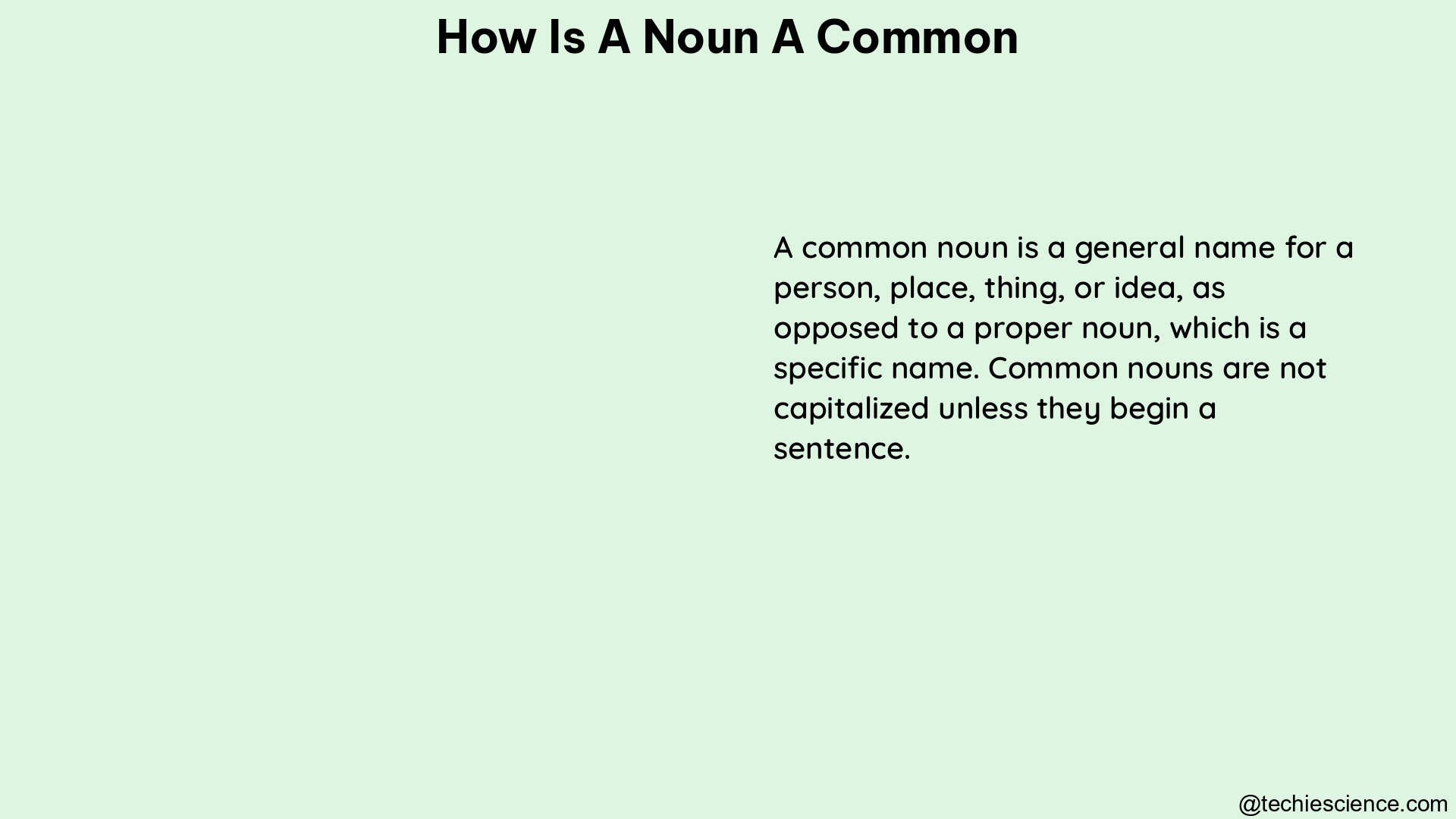A common noun is a type of noun that describes a general category of people, places, things, or concepts. It is not specific and does not refer to a particular individual, location, or entity. Common nouns are not capitalized unless they appear at the beginning of a sentence or are part of a title.
Definition and Examples of Common Nouns
A common noun is a noun that describes a type of person, thing, or place, or a concept. Common nouns are not capitalized, unlike proper nouns, which are always capitalized. Examples of common nouns include:
- Jobs: teacher, doctor, lawyer
- Animals: dog, cat, elephant
- Places: city, park, mountain
- Concepts: love, happiness, freedom
Common Nouns vs. Proper Nouns

Common nouns are defined by contrast with proper nouns. Proper nouns are the names of specific individuals, things, places, companies, etc. They are always capitalized and typically not modified by articles, determiners, or adjectives. Common nouns, on the other hand, are general and can be modified by articles, determiners, and adjectives.
| Common Nouns | Proper Nouns |
|---|---|
| teacher | John |
| city | New York |
| happiness | Buddhism |
Common Nouns That Can Become Proper Nouns
Common nouns can often become proper nouns when they are used as a name or as part of a name. For example, nouns designating family roles, such as “dad,” are common in most cases. But when they’re used directly as a name, without any articles or other determiners, they become proper and gain capitalization.
Examples:
– My dad is a teacher. (Common noun)
– Dad, can you help me with this? (Proper noun)
Academic Concepts Are Usually Common Nouns
One common mistake is to assume that concepts, theories, models, and frameworks are proper nouns and therefore capitalize them. In fact, they are usually common nouns, although they may include proper nouns (or proper adjectives), which should be capitalized.
Examples:
– The theory of relativity (Common noun)
– Newtonian physics (Proper noun + common noun)
– Darwinian evolution (Proper adjective + common noun)
Examples of Common Nouns
- The names of seasons (e.g., “spring”) are treated as common nouns in English and therefore not capitalized.
- The names of days and months (e.g., “Wednesday,” “January”) are treated as proper nouns in English and therefore capitalized.
- Academic concepts, disciplines, theories, models, etc. are treated as common nouns, not proper nouns, and therefore not capitalized.
Video Explanation
A video explanation by Khan Academy provides a clear distinction between common and proper nouns. It emphasizes that common nouns refer to general things, while proper nouns refer to specific, named things. The video also explains that proper nouns are always capitalized, while common nouns are only capitalized at the beginning of sentences.
Additional Resources
For further understanding and examples, you can refer to the following resources:
- Scribbr: This article provides detailed explanations and examples of common nouns, including their differences from proper nouns and how they are used in various contexts.
- YourDictionary: This article offers a comprehensive overview of common nouns, including their types (countable, abstract, and collective), examples, and usage in sentences.
- Grammarly: This blog post explains common nouns, their classification, and how to distinguish them from proper nouns, with examples and tips for correct usage.
These resources provide a thorough understanding of common nouns and their role in the English language.
Reference:
- Scribbr – Common Nouns
- YourDictionary – Common Nouns
- Grammarly – Common Nouns
- Khan Academy – Proper Nouns vs. Common Nouns
Hi… I am Sowndharya Jagadeeswaran, a university rank holder in M.A. English Literature. I have also done my master’s in Business Administration. Inquisitive as I am, my interest in action-oriented research helped me publish research papers in reputed journals. Now, as a career, I am an instructor where I teach young and adorable students the intricate technicalities of Public Speaking and Creative Writing. I also enjoy writing articles on topics I specialize and research in.
You can connect with me through LinkedIn.-